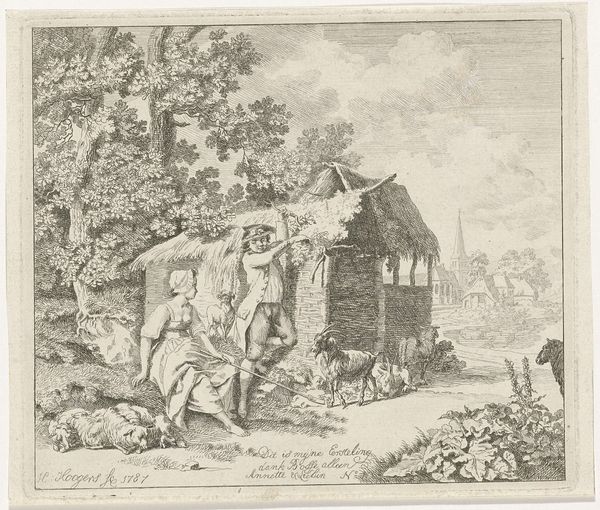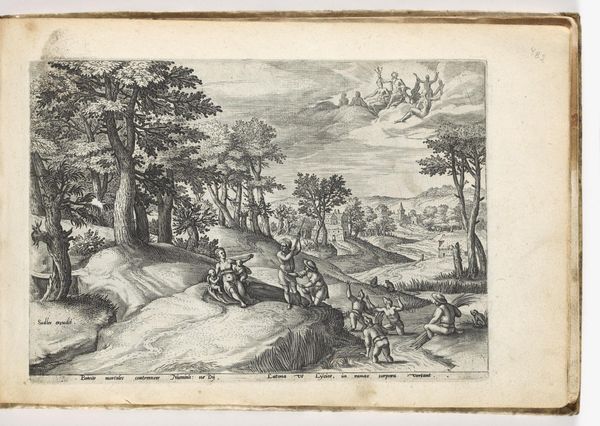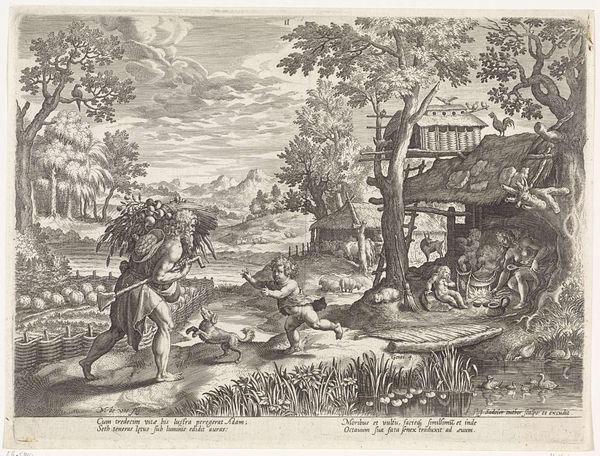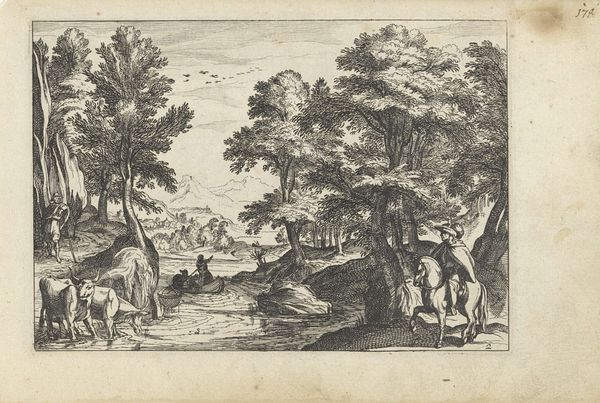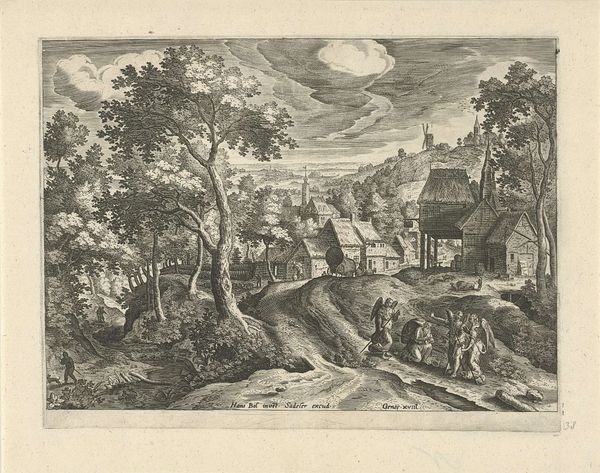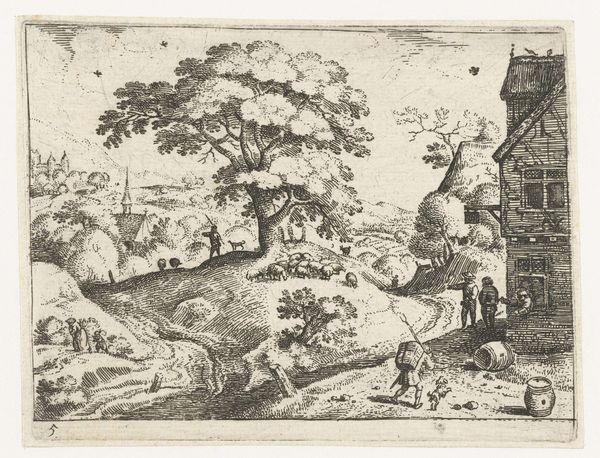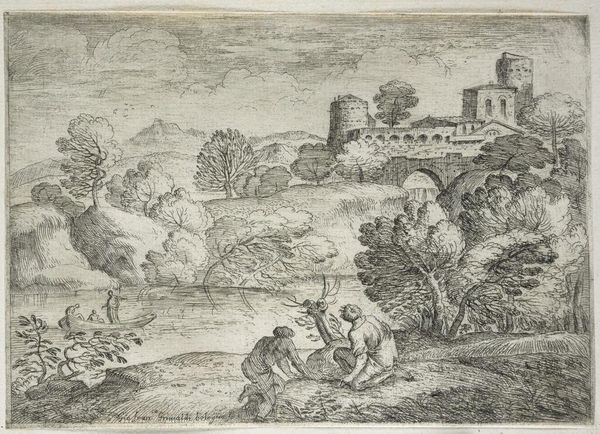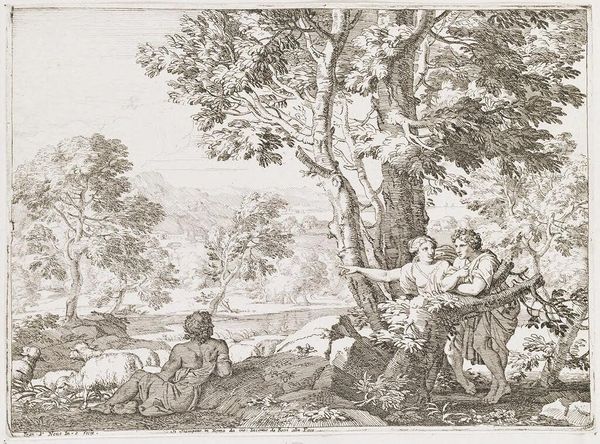
drawing, print, etching, paper
#
drawing
#
baroque
#
dutch-golden-age
# print
#
etching
#
landscape
#
figuration
#
paper
#
form
#
line
#
genre-painting
#
realism
Dimensions: 207 × 338 mm (image/plate); 277 × 363 mm (sheet)
Copyright: Public Domain
This is Jan van de Velde II’s etching, Herd of Cattle at a Ford Near a Watermill, made sometime in the first half of the 17th century. The eye is immediately drawn to the interplay between light and shadow. The sharp, dark lines of the etching define not just the forms of the cattle, trees, and buildings, but also create a dynamic contrast that gives the scene its depth and texture. Notice how the composition is structured around the diagonal sweep of the landscape, from the high ground on the left to the watermill on the right. This compositional choice leads our gaze into the scene. It invites us to explore the relationships between the human figures, animals, and architecture. The use of line, particularly in the rendering of foliage and the reflections in the water, creates a complex visual field that rewards close looking. The etching functions as a semiotic system, where each element—the cattle, the mill, the figures—can be read as signs contributing to a larger narrative about rural life and the relationship between humanity and nature. It's a constructed image where the structure gives meaning.
Comments
No comments
Be the first to comment and join the conversation on the ultimate creative platform.
